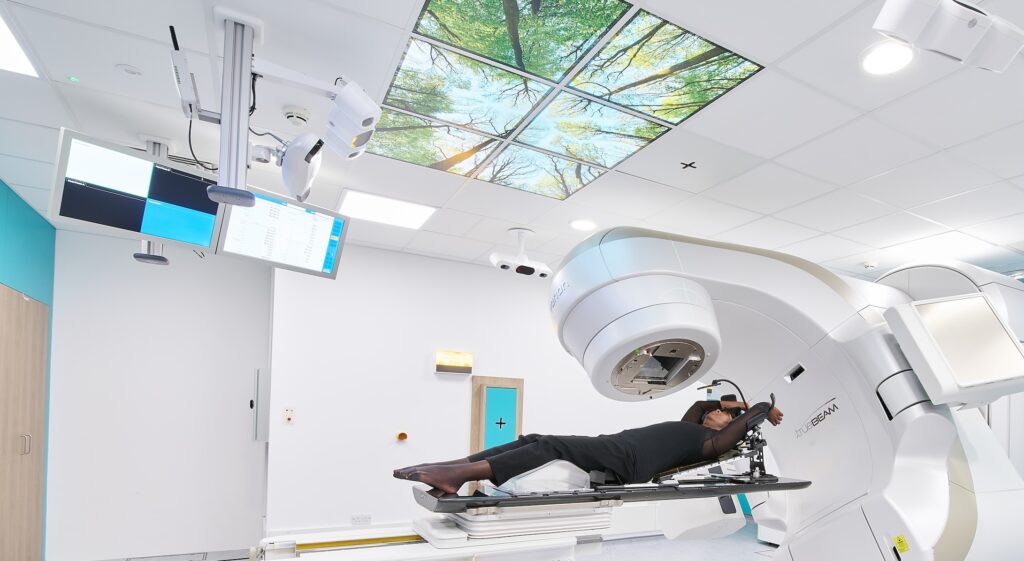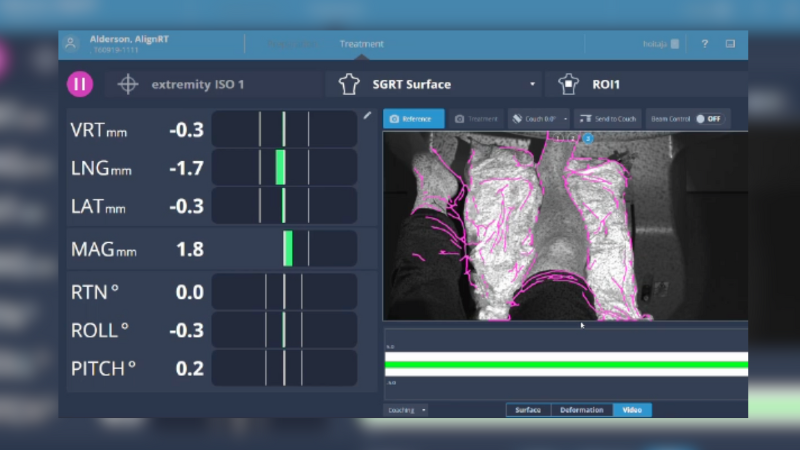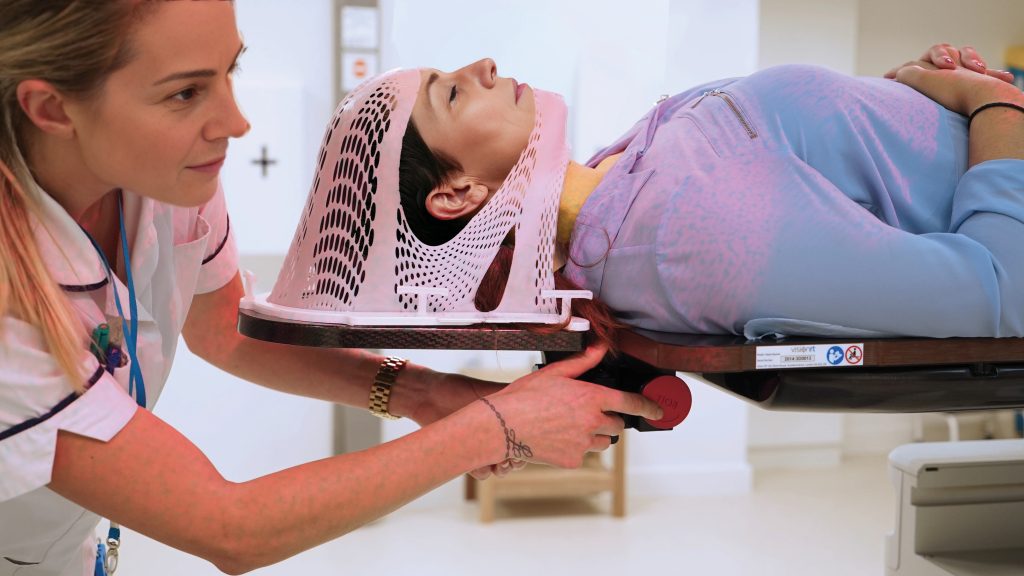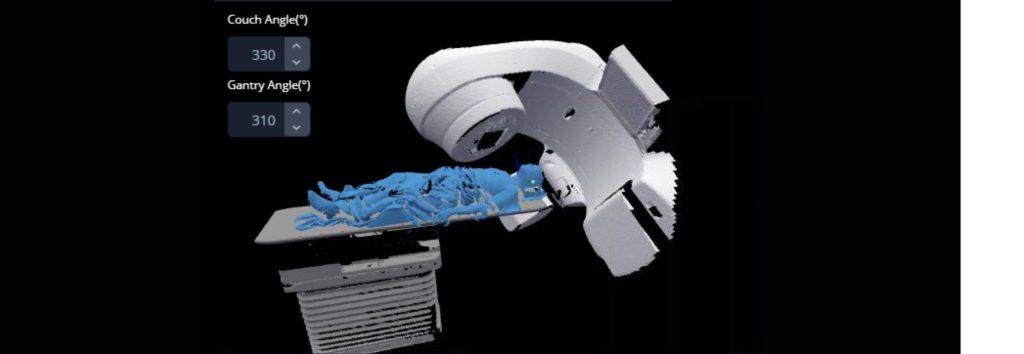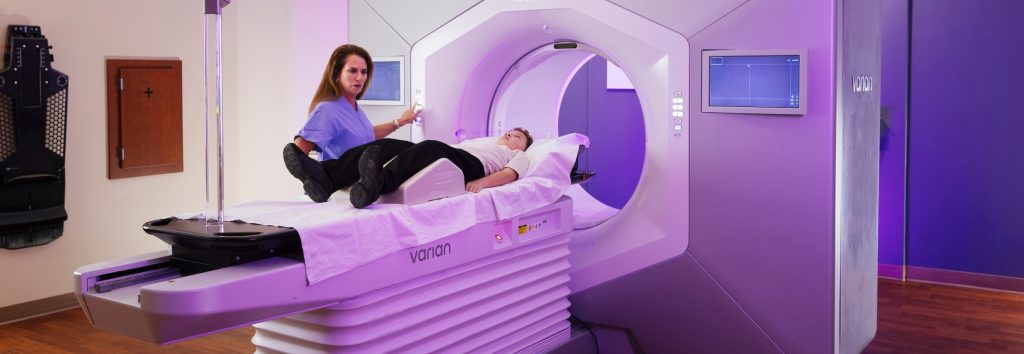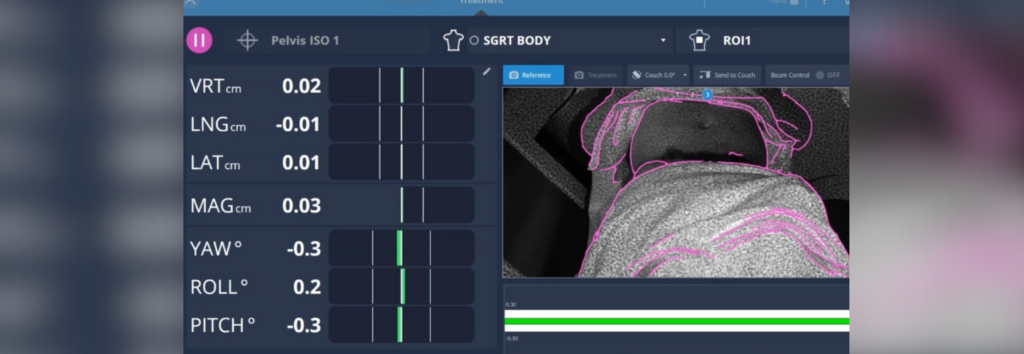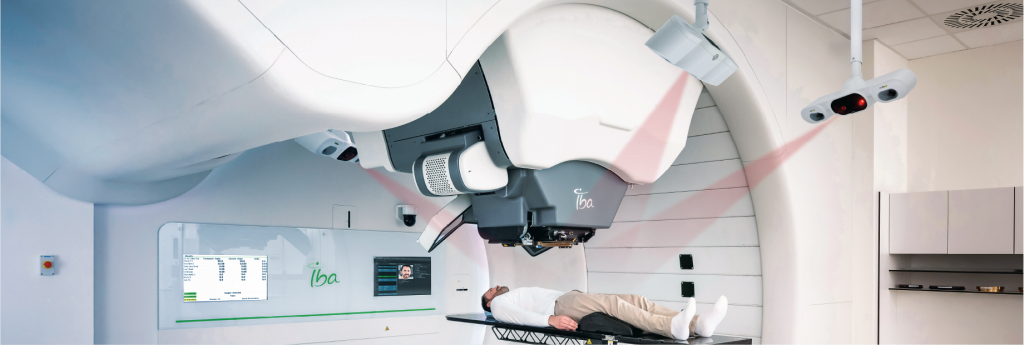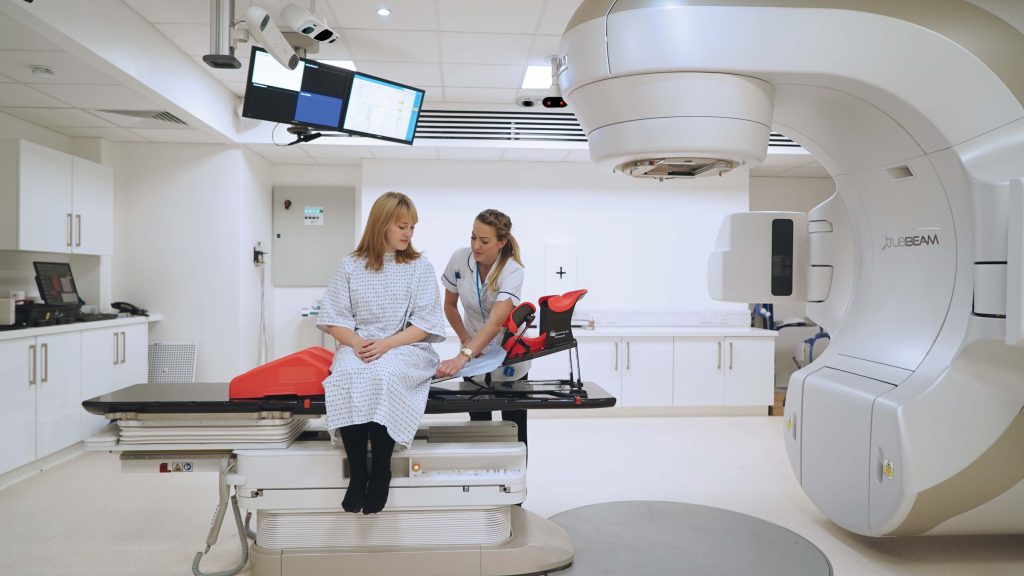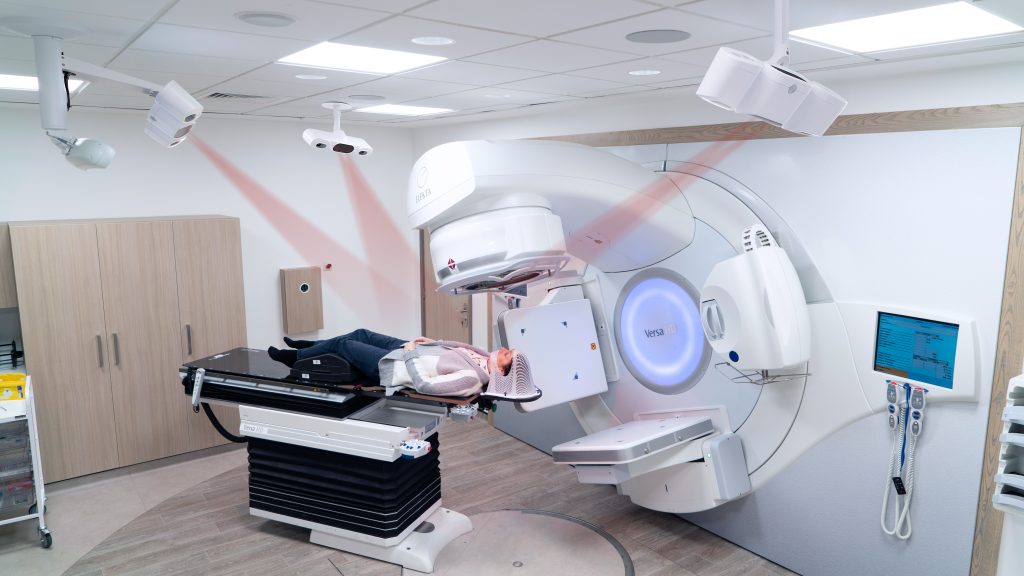The use of surface guidance to help improve the safety, effectiveness and efficiency of the entire radiation therapy workflow.
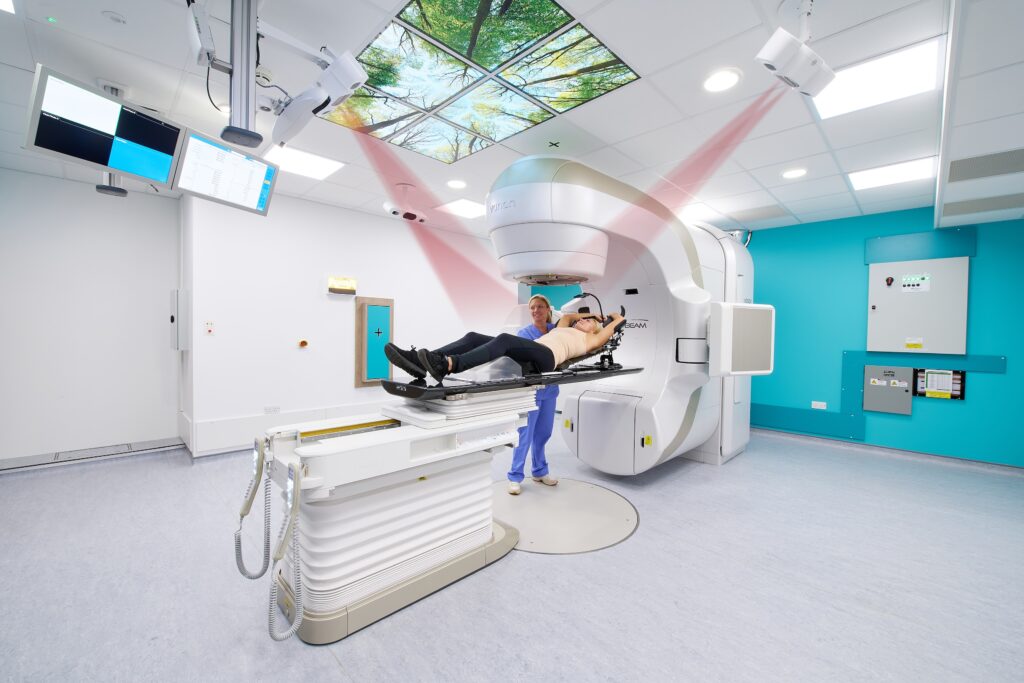
What is SGRT?
Surface Guided Radiation Therapy (SGRT) is not just motion management. It is an advanced technology that enhances radiation therapy by using the 3D patient surface to improve the reproducibility and accuracy of patient positioning in real-time. Surface guidance in the Radiation vault helps to remove the need for tattoos, marks, and restrictive immobilization devices. This enables a non-invasive, markerless approach to radiation therapy, improving accuracy, efficiency, and patient comfort, across simulation, planning, treatment, and beam delivery.
How SGRT Works
During radiation delivery, SGRT uses sophisticated camera systems to continuously monitor the patient’s surface during setup and treatment. These systems detect any movement and provide immediate feedback, allowing for precise realignment before and during radiation delivery. By ensuring optimal positioning, SGRT minimizes radiation exposure to surrounding healthy tissue and enhances treatment accuracy. Visualization of the beam position is further enhanced with DoseRT, a surface-guided dose visualization tool.
Why Choose SGRT?
SGRT represents the future of radiation therapy, offering unparalleled accuracy, improved safety, and a superior patient experience. With proven benefits in clinical applications worldwide, SGRT is rapidly becoming the standard of care in modern radiation therapy.
Benefits of SGRT
Enhanced Accuracy and Precision
SGRT supports the entire patient pathway, enabling precise positioning at every step. It supports advanced beam mapping and collision avoidance, allowing for more non-coplanar plans. During treatment, it monitors positioning in real-time, helping to reduce errors. With dose visualization, SGRT helps ensure radiation is delivered exactly as planned, to improve both safety and outcomes.
Non-Invasive and Contact Free
Using SGRT clinicians can eliminate the need for permanent tattoos and marks. The high positional accuracy helps to reduce unnecessary radiation exposure to healthy tissues and organs.
Increased Efficiency and Workflow Optimization
Real-time monitoring allows for faster and more accurate patient setup, reducing treatment time. In a head-to-head trial, AlignRT with Postural Video cut setup time by 25s / fraction and reduced repeat imaging by 63%.¹
Better Patient Comfort and Experience
Reduce the need for rigid immobilization devices, making treatment more patient-friendly. Especially beneficial for pediatric patients by reducing the need for anaesthesia.
Applications of SGRT
Numerous publications support its use in the treatment of breast, brain, head and neck cancer, sarcoma, and other conditions.
Get in touch
Ready to take the next step?
Vision RT’s family of SGRT solutions guide radiation therapy for better patient care at every step: Sim, Planning, Treatment and Dose. Whether you’re looking for a quote, a product demo (virtual or in-person) or just more information, please get in touch.


